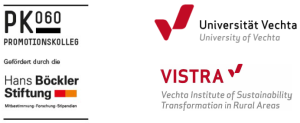“The Environmental Impacts of Soybean Expansion and Infrastructure Development in Brazil’s Amazon Basin”
by Maria del Carmen Vera-Diaz, Robert K. Kaufmann, and Daniel C. Nepstad
GDAE Working Paper No. 09-05, June 2009
GDAE’s research program on Agricultural Expansion and Climate Change has published a new Working Paper highlighting the environmental costs of agricultural expansion in the Amazon. For decades, the improvement of transportation infrastructure in the Brazilian Amazon has been the government’s main social and economic development policy in the region. Reductions in transportation costs have not only opened the agricultural frontier to cattle ranching and logging but have also caused more than two-thirds of Amazonian deforestation. Currently, the expansion of soybean cultivation is driving new deforestation. Profitable soybean crops have spread over the Mato Grosso’s cerrados and now head toward the core of the Amazon rainforest.
One of the main constraints for soy expansion into the Amazon has been the poor condition of roads. In this study, GDAE Research Fellow Maria del Carmen Vera-Diaz and her co-authors analyze the effect Amazon transportation infrastructure programs have on soybean expansion by lowering transport costs. Results indicate that paving the Cuiabá-Santarém road would reduce transportation costs by an average of $10 per ton for farmers located in the northern part of Mato Grosso, by allowing producers to reroute soybean shipments to the Santarém port. Paving the road also would expand the area where growing soybeans is economically feasible by about 70 percent, from 120,000 to 205,000 sq. km. Most of this new area would be located in the state of Pará and is covered largely by forests.
Cost-Benefit analysis of the road project indicates that the investments in infrastructure would generate more than $180 million for soybean farmers over a period of twenty years. These benefits, however, ignore the project’s environmental impacts. If the destruction of ecological services and products provided by the existing forests is accounted for, then the Cuiabá-Santarém investment would generate a net loss of between $762 million and $1.9 billion. This result shows the importance of including the value of the natural capital in feasibility studies of infrastructure projects to reflect their real benefits to society as a whole.



